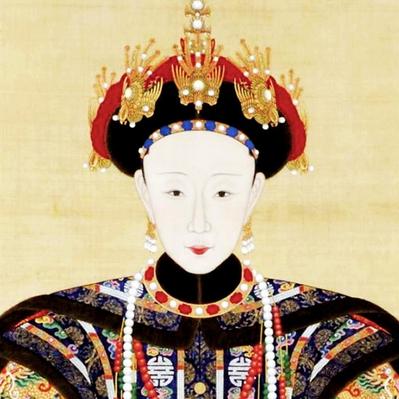
Empress Xiaoshurui
| Name | Empress Xiaoshurui |
| Title | Empress Consort of the Jiaqing Emperor |
| Gender | Female |
| Birthday | 1760-10-02 |
| nationality | Qing dynasty |
| Source | https://www.wikidata.org/wiki/Q1044463 |
| pptrace | View Family Tree |
| LastUpdate | 2025-10-27T03:40:07.038Z |
Introduction
Empress Xiaoshurui (孝淑睿皇后), belonging to the Manchu Plain White Banner Hitara clan (喜塔臘氏), was a posthumous title accorded to the wife of Yongyan, who became the Jiaqing Emperor of the Qing Dynasty. She held the title of Empress consort of Qing from February 12, 1796, until her death on March 5, 1797, serving as empress for approximately one year.
Family Background:
Her personal name is not recorded in historical texts. She was the daughter of He'erjing'e (和爾經額), who served as a second-rank literary official (總管) in the Imperial Household Department and as a second-rank military official (副都統), and who held the title of a third-class duke (三等公). Her paternal grandfather was Chang'an (常安), and her paternal grandmother was Lady Ligiya. Her mother was Lady Wanggiya. She had one elder brother, Shengzhu (盛柱), and two younger brothers, Mengzhu (孟柱) and Lingzhu (齡柱).
Birth and Early Life:
She was born on the 24th day of the eighth lunar month in the 25th year of the reign of the Qianlong Emperor, which corresponds to October 2, 1760, in the Gregorian calendar.
Marriage and Children:
On June 5, 1774, Lady Hitara married Yongyan, the 15th son of the Qianlong Emperor, and became his primary consort. She bore three children:
- A second daughter born on June 2, 1780, who died prematurely on September 6, 1783.
- Her second son, Minning, born on September 16, 1782.
- Her fourth daughter, Princess Zhuangjing of the First Rank, born on October 20, 1784.
Medical records from the Qing dynasty indicate that after consecutive childbirths, her health began to decline, despite being reported as generally in good health before childbirth.
Ascension to Empress:
Following the abdication of the Qianlong Emperor on February 9, 1796, in favor of Yongyan, who then became the Jiaqing Emperor, Lady Hitara was installed as empress consort on February 12, 1796. She held the position for just over a year before passing away.
Posthumous Recognition:
Her posthumous title was drafted on March 12, 1797, and with the emperor's approval, she was honored with the title "Empress Xiaoshu" (孝淑皇后). During the reign of the Jiaqing Emperor, her posthumous title was extended in April or May 1821 to "Empress Xiaoshu Duanhe Renzhuang Ciyi Guangtian YouSheng Rui." Her posthumous titles were further extended during the reigns of subsequent emperors, including the Daoguang and Xianfeng dynasties, adding colors of "Dunyu" and "Zhaosu."
Titles:
- During the Qianlong Emperor's reign (1735–1796): Lady Hitara; primary consort (from June 1774)
- During the Jiaqing Emperor's reign (1796–1820): Empress (from February 1796); posthumously Empress Xiaoshu (from May/June 1797)
- During the Daoguang Emperor's reign (1820–1850): Empress Xiaoshurui (from April/May 1821)
Children:
- Second daughter (June 2, 1780 – September 6, 1783)
- Minning (September 16, 1782 – February 26, 1850), second son of the Jiaqing Emperor and later emperor (Daoguang)
- Princess Zhuangjing of the First Rank (October 20, 1784 – June 27, 1811); married Manibadala of the Tumed Borjigit clan in November/December 1802
In Popular Culture:
She has been portrayed by various actresses in television series, including Yuen Yi-ling in "The Rise and Fall of Qing Dynasty" (1988), Natalie Wong in "Wars of In-laws" (2005), Sarah Song in "Curse of the Royal Harem" (2011), and Jess Sum in "Succession War" (2018).
Note:
Her personal name remains unrecorded. Her life and titles are documented in historical texts such as the "Draft History of Qing" (Qing Shi Gao) by Zhao Erxun.
Family Tree
Tap to expand more relatives